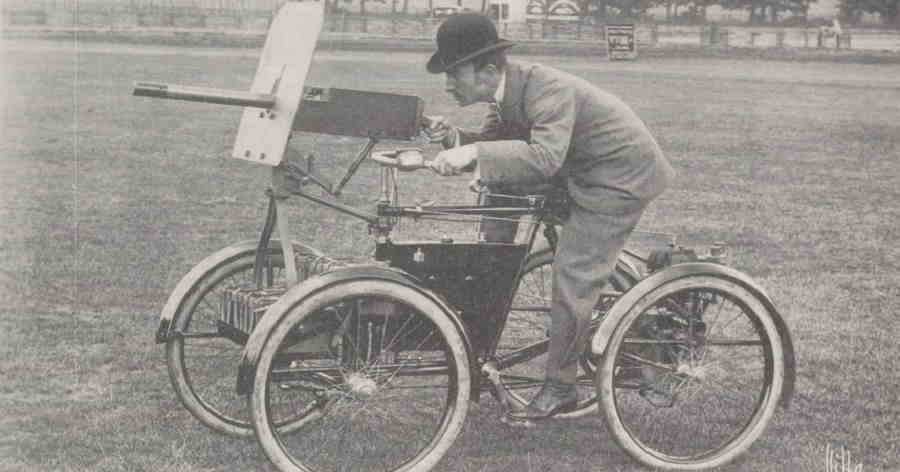
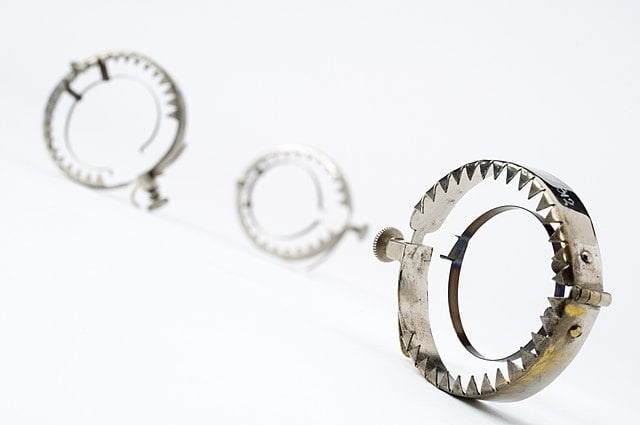
Jugum Penis is a bizarre invention, created by Dr. J.D. Guillotin in 1869 as an alternative to male circumcision. The device is a metal ring that is placed at the base of the penis and is designed to prevent premature ejaculation and erectile dysfunction. The Jugum Penis is a metal ring that fits around the base of the penis and is held in place by two small screws. The ring is meant to provide a constricting sensation around the base of the penis, which is thought to improve sexual performance and reduce premature ejaculation. The ring is not meant to be a permanent solution, as it is designed to be removed after use. The device has been met with mixed reactions, with some praising its effectiveness and others questioning its safety. Proponents of the Jugum Penis argue that it can help to improve sexual performance and reduce the risk of premature ejaculation. Critics however, argue that the device can be uncomfortable and can cause long-term damage to the penis, due to the constricting sensation it provides. Overall, the Jugum Penis is a bizarre invention which has been met with mixed reactions. While some people believe it can be an effective way to improve sexual performance, others argue that it can be uncomfortable and cause long-term damage to the penis. Ultimately, it is up to the individual to decide whether the device is right for them.
_1906.jpg)
The Electrophone is a bizarre invention that has wowed audiences for over a century. Developed in the late 19th century, it is an early form of telephone technology that uses electrical signals for communication. It is a unique system that is based on a combination of electricity and sound waves. In a nutshell, the Electrophone works by using electrical signals to transmit sound instead of using traditional telephones. The sound is then transmitted over long distances using electrical wires. The sound is amplified and transmitted to the receiver via a loud speaker. The Electrophone was quite revolutionary for its time as it allowed people to communicate with each other even when they were far apart. The Electrophone was also used for entertainment purposes. It was especially popular in the early part of the 20th century when it was used to broadcast music to people’s homes. The Electrophone was a key player in the development of the broadcasting industry. The invention allowed people to listen to music, news and other forms of entertainment from their own homes. The Electrophone was used in many different ways. It was used by businesses to communicate with their employees and customers. It was also used by the military to communicate with troops in the field. In addition, it was used by the entertainment industry to broadcast music and other forms of entertainment. The Electrophone is an interesting invention that still remains a mystery to many. Its unique combination of electricity and sound waves allowed for revolutionary communication and entertainment. Despite the invention’s age and obsolescence, it remains a fascinating piece of technology and a testament to the ingenuity of its inventors.
Cholera belts are a strange and somewhat bizarre invention designed to prevent the spread of cholera. These belts are made up of a leather belt with several metal spikes. The spikes are inserted into the abdomen of the patient and used as a form of acupuncture to stimulate the nerves and increase blood flow to the digestive tract, which is believed to aid in digestion and help to ward off the disease. The belts have been around since the 19th century, when they were first used to treat cholera outbreaks in India and other parts of Asia. The idea behind the belts was that the metal spikes would stimulate the digestive tract and help to reduce the symptoms of cholera. This was thought to be effective because the disease is caused by a bacterium that thrives in an acidic environment. The belts were also thought to help keep the patient's body temperature stable, which would help to prevent the growth of the bacteria. The belts were used for a short period of time before they were deemed ineffective and were largely forgotten about. However, in recent years, there has been a resurgence of interest in the belts due to their potential to be used as a tool to prevent the spread of cholera. While there is still some debate about the effectiveness of the belts, some studies have shown that they can help to reduce the severity of the symptoms and even reduce the risk of death in patients with cholera. The belts are still being used in some parts of the world today, but they have largely been replaced by more modern treatments. While the belts may seem strange and bizarre, they were actually a sign of progress at the time they were invented and may still have some beneficial effects in the fight against cholera.
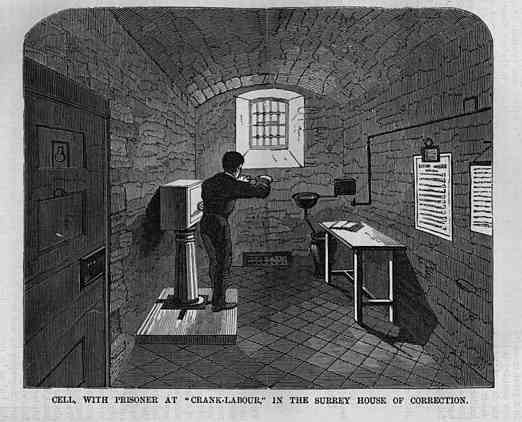
The Crank Punishment device, also known as the crank organ, is a bizarre invention from the 19th century that was used as a form of punishment for inmates in prisons. It was designed to be an instrument of torture, with the aim of instilling fear in the inmates. The device was a large wooden box with a crank handle on one side, and two small chambers inside. The crank handle was connected to a series of metal rods and cogs, which powered two small metal wheels inside the chambers. The wheels were designed to spin at a rapid rate, creating an excruciatingly loud noise that was designed to cause pain and discomfort to the inmates. The device was operated by a prison guard, who would turn the crank handle in order to spin the wheels. The noise would then reverberate throughout the prison, causing fear and distress among the inmates. The sound was so loud that it could be heard from outside the prison walls. The Crank Punishment device was extremely effective in its purpose, as it caused fear and discomfort in the inmates. However, it was also considered to be a cruel and unusual punishment, and it was eventually banned in many countries, including the United States. The Crank Punishment device is a prime example of a bizarre invention from the 19th century. It was designed to cause fear and discomfort in inmates, and it was extremely effective in its purpose. However, it was also considered to be a cruel and unusual punishment, and it has since been banned in many countries.

Atmospheric and pneumatic railways were two of the most bizarre inventions of the 19th century. Despite their futuristic appearance, both of these technologies were based on relatively simple engineering principles. Atmospheric railways used a vacuum created by an engine to pull carriages along specially constructed tracks. A large piston was mounted on the engine and connected to the carriages via a tube. The piston was then used to draw air out of the tube, creating a vacuum. This vacuum would then be used to pull the carriages along the track. Pneumatic railways, on the other hand, relied on a system of compressed air to propel carriages along their tracks. A compressor connected to the engine would fill a tube running beneath the track with compressed air. This air would then be used to push carriages along the track. Both of these technologies were incredibly ambitious, but they ultimately proved too costly and difficult to maintain to be commercially viable. Despite this, they remain fascinating examples of 19th-century engineering and ingenuity. Atmospheric and pneumatic railways are examples of how the inventive spirit of the 19th century could push technology to its limits. Despite their impracticality, these technologies left an indelible mark on the history of engineering, and their legacy continues to this day.
The Rotary Hairbrush has to be one of the most bizarre inventions of all time. The device is essentially a handheld device that looks like a standard hairbrush, but instead of bristles, it has a spinning disc with blades on it. The device is designed to cut and shape your hair as you brush it, and is claimed to be able to give you a professional-looking haircut in minutes. The Rotary Hairbrush is said to work by gently rotating the blades of the device against the scalp, cutting and shaping the hair while simultaneously brushing it. It is said to be especially effective on thick, curly or wavy hair, as the blades are able to cut through these types of hair more easily than regular hairbrushes. The device has received mixed reviews from users, with some claiming it works well and others finding it too difficult to use. Many users also report that the device does not provide the same level of precision and accuracy as a professional barber might. The invention of the Rotary Hairbrush has certainly caused quite a stir in the hair care world. While some may view it as a gimmicky product that won’t provide the same results as a professional haircut, others may find it to be a useful tool for quickly and easily cutting and styling their own hair. Regardless of where you stand on the Rotary Hairbrush, one thing is for sure: it is a truly bizarre invention that has certainly made its mark on the hair care industry. The device provides a unique and innovative way to cut and style hair, and whether or not it proves to be a success in the long term remains to be seen.

The Motor Scout is a bizarre invention, developed in the late 19th century, that is a combination of a motor vehicle and a bicycle. It is designed to be a lightweight, portable, economical transportation device. The Motor Scout is a two-wheeled vehicle powered by an internal combustion engine. The vehicle has a wheelbase of just under four feet, and the engine is mounted above the rear wheel. The engine is connected to the wheel via a belt drive, and the wheel can be driven forward or backward, allowing the vehicle to maneuver in tight spaces. The Motor Scout was designed to be used in cities and rural areas, providing an efficient way to travel between destinations. The vehicle is powered by gasoline, and the range is dependent on the size of the fuel tank. The engine is started with a hand crank, and the vehicle can reach speeds of up to 30 miles per hour. The vehicle also has a spring-loaded seat to absorb shocks and a bell to alert passersby. The Motor Scout is a unique invention that has stood the test of time. It was designed to be an efficient and economical way to travel, and its small size and weight make it ideal for maneuvering through tight spaces. It has a wide range of uses, from personal transportation to mail delivery, and it has been used by the military. The Motor Scout is a fascinating invention that has been used for more than a century. Its combination of a motor vehicle and a bicycle make it an unusual and unique invention, and it is a testament to the inventiveness of 19th century innovators. Its combination of practicality and ingenuity make it an enduring symbol of the creativity and ingenuity of the past.
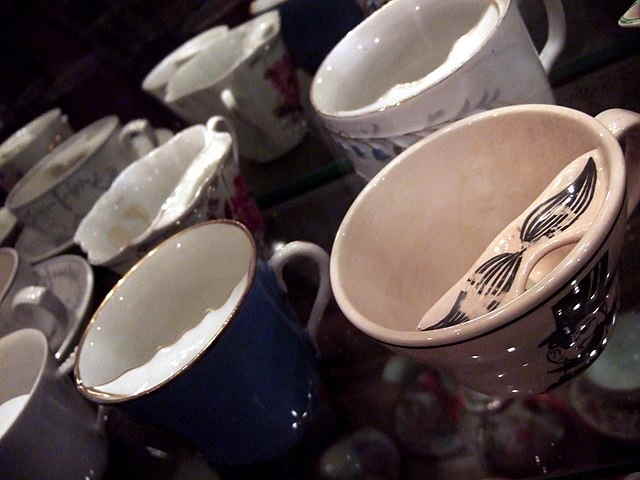
Mustache cups and spoons are a bizarre invention for sure! The mustache cup and spoon set is a unique way to add a bit of novelty to any dinner or tea party. The cup is shaped like a mustache, usually in a light or dark brown color, and the spoon looks like a mustache, usually in a white or silver color. This strange invention was created by the 19th century German artist, Franz Nagel. It is believed that he created the mustache cup as a way to make tea-time more enjoyable and whimsical. The mustache cup and spoon set is a great conversation piece and a fun addition to any home or office. The cup is usually made of porcelain or glass and comes in a variety of colors and designs. The cup has a mustache handle and a small mustache-shaped spout. The handle and the spout are usually decorated with a few small flowers, leaves, or other designs. The handle is also often topped with a small figurine, such as a rooster, dog, or cat. The spoon is usually made of silver or stainless steel and is shaped like a mustache. It has a small bowl at the end to scoop out whatever the user is eating. The spoon is also sometimes decorated with flowers, leaves, or other designs. The mustache cup and spoon set is an incredibly unique and strange invention that adds a bit of whimsical charm to any dinner or tea party. It is sure to be a conversation starter and bring a smile to the faces of all who see it. It is a great way to show off your creative side and give your guests a unique and memorable experience.
Wave and Rocking Baths are a unique and bizarre invention that have been around since the late 19th century. This invention was created by a French engineer named Étienne-Jules Marey and it is used to simulate a wave-like motion in a bathtub. This invention was created in order to help those with physical ailments, such as rheumatism, to relax in the water. The Wave and Rocking Baths work by using a special type of pump that is connected to a mechanism that is built into the bottom of the bathtub. This mechanism then creates a wave-like motion in the water. The wave-like motion is created by the pump as it pushes the water up and down. This creates a gentle rocking motion, which is similar to the movements of a boat on the ocean. The Wave and Rocking Baths are designed to be much gentler than a normal bath, which can be quite harsh. The gentle motion of the water helps to soothe aching muscles and joints, while also providing a relaxing experience. There are a variety of different settings that allow users to control the intensity and speed of the wave-like motion, allowing them to customize their experience. The Wave and Rocking Baths are a unique and bizarre invention that have been around for over 100 years. They are designed to help those with physical ailments relax and enjoy a gentle rocking motion in the water. This invention has been used in many different forms, from massage chairs to therapeutic pool systems. The Wave and Rocking Baths can provide a unique and relaxing experience for those who need it, and it is sure to be around for many years to come.
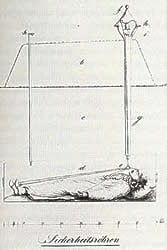
Safety Coffins are a bizarre invention that dates back to the early 19th century. The original concept was to provide a way for people to protect themselves from premature burial. The idea was that if a person was mistakenly declared dead and placed in a coffin, the safety coffin would provide a way for them to alert others of their predicament. Safety coffins were designed with various features that would alert those outside of the coffin that the occupant was still alive. The most common feature was a cord or string attached to a bell outside of the coffin. If the person inside the coffin pulled the cord, the bell would ring, alerting those outside of the coffin. Other features included air tubes and flags that could be raised from the coffin. Safety coffins were made from a variety of materials, including metal, wood, and other materials. The most common material was metal, which was often painted black to resemble a traditional coffin. The metal was also used to provide a layer of protection against premature burial. Safety coffins were used by a variety of people, including those who were concerned about being mistakenly declared dead and those who suffered from sleeping sickness or other ailments. Safety coffins were also used in some places as a form of insurance against premature burial. Despite their widespread use, safety coffins were not without their critics. Some argued that safety coffins were a waste of money and that people should simply trust in the medical profession's ability to correctly diagnose death. Others argued that safety coffins were not foolproof and could fail if the cord or string was cut or if the bell was not heard. Despite the criticisms, safety coffins continued to be used throughout the 19th century. In the 21st century, safety coffins are still used in some parts of the world, although they are not as common as they once were. Safety coffins continue to be a bizarre invention that serves as a reminder of the fear of being mistakenly declared dead.